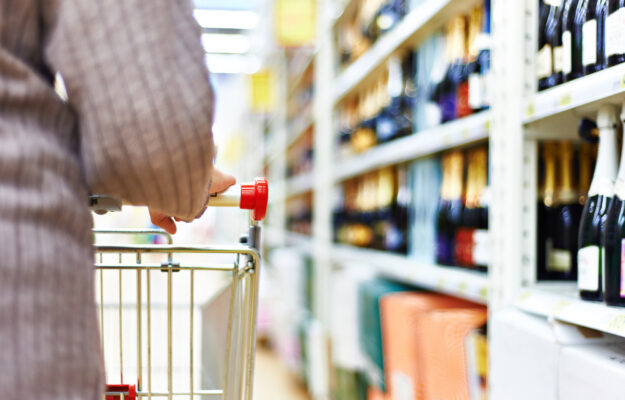The number of bottles of wine sold in Italian stores and large-scale distribution in 2023 will return just under 1 billion, 3.1% less than the previous year for a total value of just over 3 billion euros. This is noted by the Uiv-Isma Observatory based on Ismea-Nielsen-IQ in relation to wine sales in large-scale and retail stores through 2023. A complicated year, according to the Observatory (and as already emerged from Circana data, analyzed by WineNews, in recent days), which, while on the one hand, has amplified the new post-Covid consumption trends, on the other has resulted in more than one suffering for a sector still grappling with generalized price increases not yet absorbed and well beyond the timid growth recorded in value (+2.6%). Still wines set volumes at -3.6% (with reds at -4.9%) and recorded the 11th consecutive quarter with a minus sign. Sparkling wines, despite a zeroing of price growth in the last quarter, remain on a buoyant line compared to the volumes sold in the previous year, but only thanks to the “low cost” non-Prosecco Charmat (+7.1%), without which the type would turn negative by 2% points. In general - highlights the Uiv/Ismea Observatory - the evolution of wine consumption by Italians from 2019 to the present has been significant and reflects factors only partly mirrored by the economic situation. Often, in fact, such sharp and only seemingly sudden changes are dictated by structural changes in a demand that has never been so fluid in terms of beverage consumption.
Compared to 5 years ago, and after the surges of the Covid years, among the shelves the drop in consumption is close to 8%, the equivalent of 100 million bottles largely based on still wines (-11%) and fortified wines (-19%). PDOs, at -2%, are by far the category that yields the least, with whites (+3%) and rosés (+17%) marking green light. Doing much worse are IGTs (-13%) but especially ordinary wines, nosediving to -17% and the equivalent of 64 million fewer bottles.
Decidedly opposite trend, however, that of sparkling wines, which in a five-year period gained almost 19%, now at 139 million bottles sold. Credit to the Prosecco world, which is up 30% over the period, but also to non-Prosecco Charmats, at +42% thanks to a meteoric rise particularly in the last two years in which lower purchasing power also played an important role. A trend, that of Italian bubbles, that has long been reflected in exports as well, with the type seeing its market share triple in the last 10 years. The same cannot be said for champagne, whose sales in the period fell by 38%.
Granted that the top range of reds is by far more present at the horeca channels, where certain appellations or products have become timeless, it is undeniable that, in general, comment Unione Italiana Vini and Ismea-the symbolic type of tricolor wine is the most in trouble in home consumption with a descent, steeper and steeper in recent years, of 15%. Reds give up 6%, almost 3 times more than the average, among consumption of appellation products, 19% among Igt, but the record (negative) is recorded among ordinary wines, with -22%. Few of the big PDOs and Igts are holding up (PDO Montepulciano d’Abruzzo at -2%, Chianti at -3, Rubicone Igt in the Sangiovese type at +7%), many double-digit declines, and often over 20% for branded wines such as the Lambrusco family, the Apulians (Salento Igt, Puglia Igt), the Sicilians with Nero d’Avola Dop and Terre Siciliane Igt), Sardinia’s Cannonau, the Piedmontese (Barbera and Dolcetto Doc), the Veneto (Igt Cabernet and Merlot), and the Lombards, with the Oltrepò Pavese Barbera and Bonarda Docs.
Separate discussion deserves e-commerce, a phenomenon that deflagrated at lockdown, in the midst of a pandemic, and a channel on which so much investment came from top names. Today, the Observatory explains, online purchases are worth three times as much as they were in 2019, but for the past 2 years, orders have gradually deflated, to the point of losing 21% on the 2021 peak. This is a physiological decline for a channel on the roller coaster that has also implemented a significant drop in price lists. Those who order online do so by looking even more for quality - the average price per liter is 61% higher than in-lane purchases - they buy more PDO and IGT (75% of total still wine purchases) but above all they order more sparkling wines, which online account for 22% of purchases, against an overall average at 13%. A niche, that of wine e-commerce, which accounts for just 1.5% of total purchases in large-scale distribution and retail, on which many players are relying for the future.
Copyright © 2000/2025
Contatti: info@winenews.it
Seguici anche su Twitter: @WineNewsIt
Seguici anche su Facebook: @winenewsit
Questo articolo è tratto dall'archivio di WineNews - Tutti i diritti riservati - Copyright © 2000/2025









































































































































































































